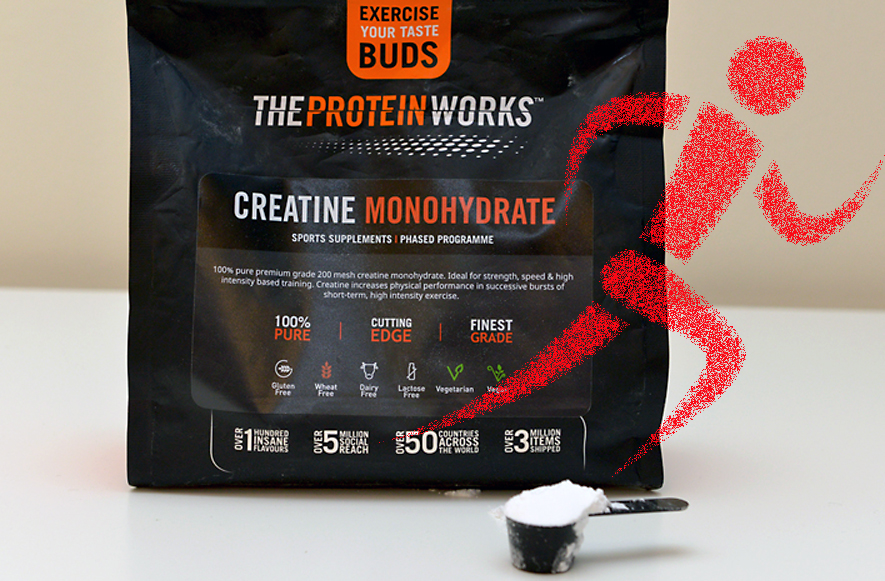Medium-chain triglycerides: a superior energy source for endurance athletes?
Fat supplementation
Various methods have been used to try and make the body more efficient at using fat and therefore boost performance by conserving the body's glycogen and intramuscular triglyceride stores. These have included:1 extreme diets consisting predominantly of fats, a nutritional strategy which has been successful with rats but has shown no performance benefit in humans
2 increasing the percentage of fat ingested in the diet, which has been recommended in some triathlon magazines. This is not thought to result in an improvement in performance, and it probably has other, negative health implications
3 ingesting fat intravenously. This method has been employed in professional cycling.
This last practice, where cyclists are fed 'intravenous triglyceride emulsions', is potentially harmful and needs to be carefully monitored. In 1991, an entire team quit the Tour de France after ingesting a 'contaminated' batch of fat emulsion. Although ingesting fat intravenously during rest periods in stage races may well speed the replenishment of the intramuscular triglyceride stores, this technique would be considered somewhat extreme for most athletes.
The body's limited use of carbs
Given all the above information and the overwhelming importance of glycogen for endurance performance, why isn't the answer to simply eat or drink more carbohydrate when exercising? The problem is that the body does not appear to be able to use more than 1.0-1.1g of ingested carbohydrate per minute, which only provides 240-264 kcal of energy. Protein could also be considered, but normally it contributes little energy during exercise, and when it is used results in the production of ammonia, which may lead to central fatigue and thus a reduced performance.This leaves fat as another potential ergogenic aid, but ingesting 'normal' fat has several major disadvantages from an exercise point of view. For one thing, it can only be converted into energy slowly, taking about 3-4 hours to pass even into the bloodstream. For another, it also has an inhibitory effect on gastric emptying, and thus will delay fluid and carbohydrate uptake.
This brings us to the comparatively new substance, medium-chain triglycerides (first discussed in PP three years ago), which has been claimed will spare glycogen and by implication spare the body's intramuscular triglyceride stores as well. MCTs have been advocated as a fuel that could be used as an alternative to carbohydrate.
What exactly are MCTs?
They are made from coconut oil. The oil is split into glycerol and long-chain and medium-chain fatty acids. The medium chains are then rejoined with glycerol to form MCTs. The important of this from an athlete's point of view is that semi-synthetic MCTs have different characteristics from ordinary fat.1 They mix easily with liquid and have a smaller molecular size than ordinary fat. This means they are absorbed rapidly into the intestine
2 They are also transported around the body differently to ordinary fat, and the medium-chain fatty acid part, which is utilized in exercise, is not dependent on the carnitine system for transport across the mitochondrial membrane. Since carnitine transport is thought to be one of the factors which slows down the oxidation of fat, it is believed that medium-chain fatty acids will be oxidised more rapidly.
Do MCTs actually work?
Research has discovered several things about MCTs. These are:1 MCTs are rapidly emptied from the stomach and available for use as fuel during exercise
2 It is better to take them in combination with carbohydrate, which will not inhibit glycogen utilization
3 Ingestion of 30g of MCTs (250 kcal) seems to be the most that most people can tolerate. More than this usually leads to stomach cramps and even diarrhoea, although it has been speculated that frequent use may lead to a greater tolerance
4 If larger amounts can be consumed, MCTs may well prove to be a beneficial supplement for endurance performance
Though our first report in September 1994 suggested that MCTs might prove to be the 'perfect dietary fat for endurance athletes', current opinion is still that carbohydrate supplementation is the best policy during endurance events. The use of MCTs is sound in theory, and they may yet prove to be an important source of fuel during exercise when combined with carbohydrate. Although the benefits of MCT supplementation in tests during simulated competition have not proved statistically significant, it must be remembered that many athletes are looking for gains in performance which may be smaller than this level of difference. Because MCT use is limited by the amount that can be tolerated without causing stomach upsets, it has been found that it can only contribute between 3 and 7 per cent of the total energy expenditure during endurance exercise. Yet it could be that even this small contribution may be enough to sometimes make a difference. For instance, could such a contribution lead to the saving of enough glycogen to power a winning burst for the finish line?
Although carbohydrate looks set to remain the king of (legal) ergogenic supplements, the jury is still out on whether MCTs will have an important role to play in the future.
You need to be logged in to continue reading.
Please register for limited access or take a 30-day risk-free trial of Sports Performance Bulletin to experience the full benefits of a subscription. TAKE A RISK-FREE TRIAL
TAKE A RISK-FREE TRIAL
Newsletter Sign Up
Testimonials
Dr. Alexandra Fandetti-Robin, Back & Body Chiropractic
Elspeth Cowell MSCh DpodM SRCh HCPC reg
William Hunter, Nuffield Health
Newsletter Sign Up
Coaches Testimonials
Dr. Alexandra Fandetti-Robin, Back & Body Chiropractic
Elspeth Cowell MSCh DpodM SRCh HCPC reg
William Hunter, Nuffield Health
Keep up with latest sports science research and apply it to maximize performance
Today you have the chance to join a group of athletes, and sports coaches/trainers who all have something special in common...
They use the latest research to improve performance for themselves and their clients - both athletes and sports teams - with help from global specialists in the fields of sports science, sports medicine and sports psychology.
They do this by reading Sports Performance Bulletin, an easy-to-digest but serious-minded journal dedicated to high performance sports. SPB offers a wealth of information and insight into the latest research, in an easily-accessible and understood format, along with a wealth of practical recommendations.
*includes 3 coaching manuals
Get Inspired
All the latest techniques and approaches
Sports Performance Bulletin helps dedicated endurance athletes improve their performance. Sense-checking the latest sports science research, and sourcing evidence and case studies to support findings, Sports Performance Bulletin turns proven insights into easily digestible practical advice. Supporting athletes, coaches and professionals who wish to ensure their guidance and programmes are kept right up to date and based on credible science.










